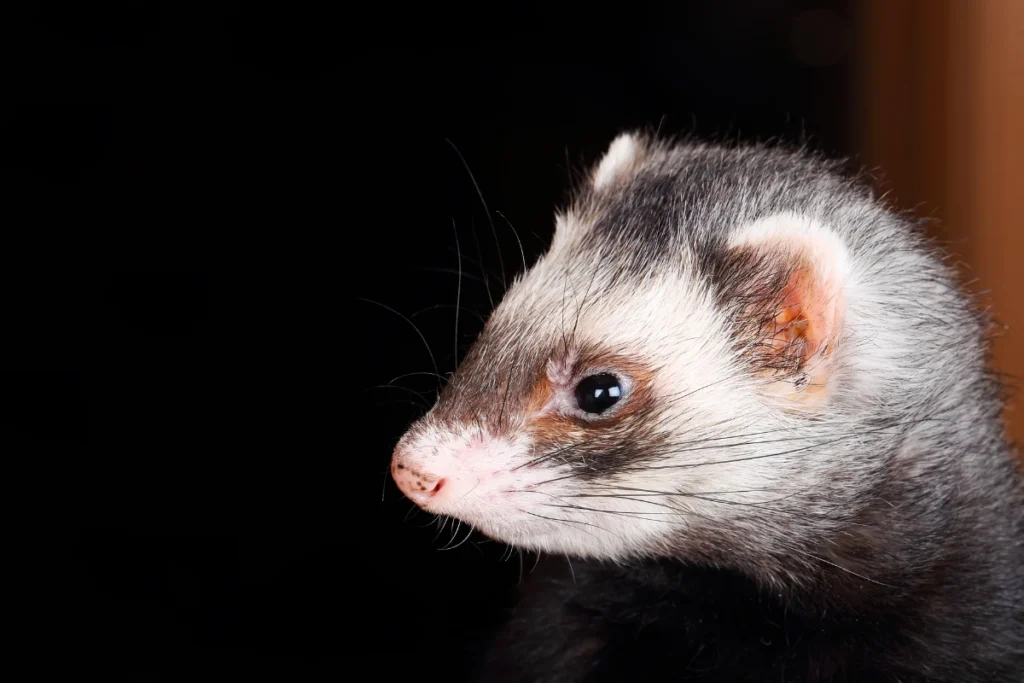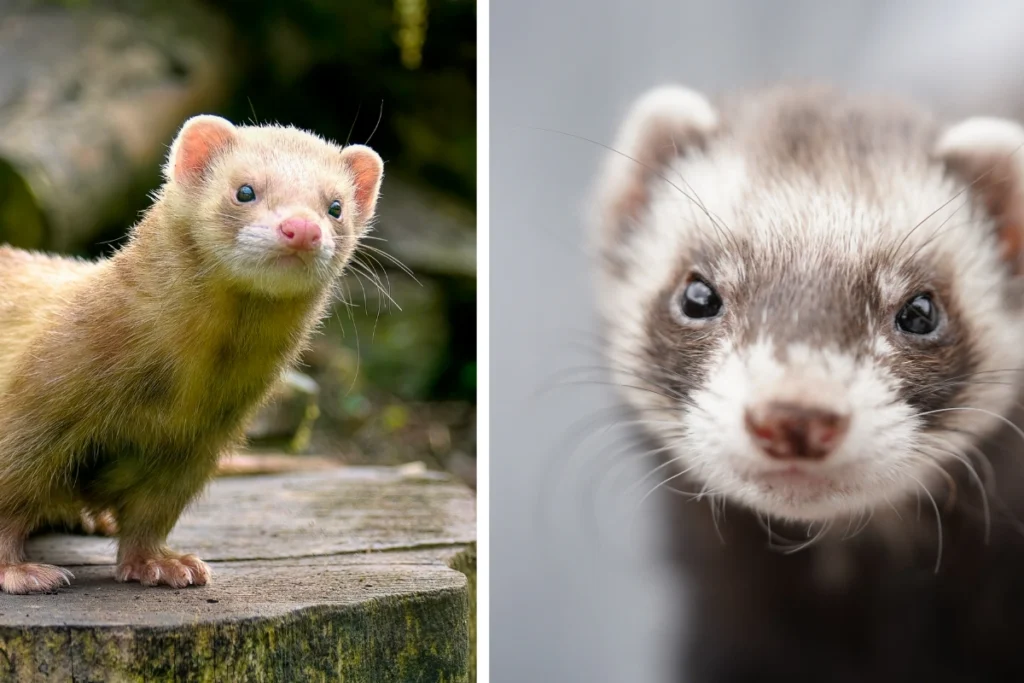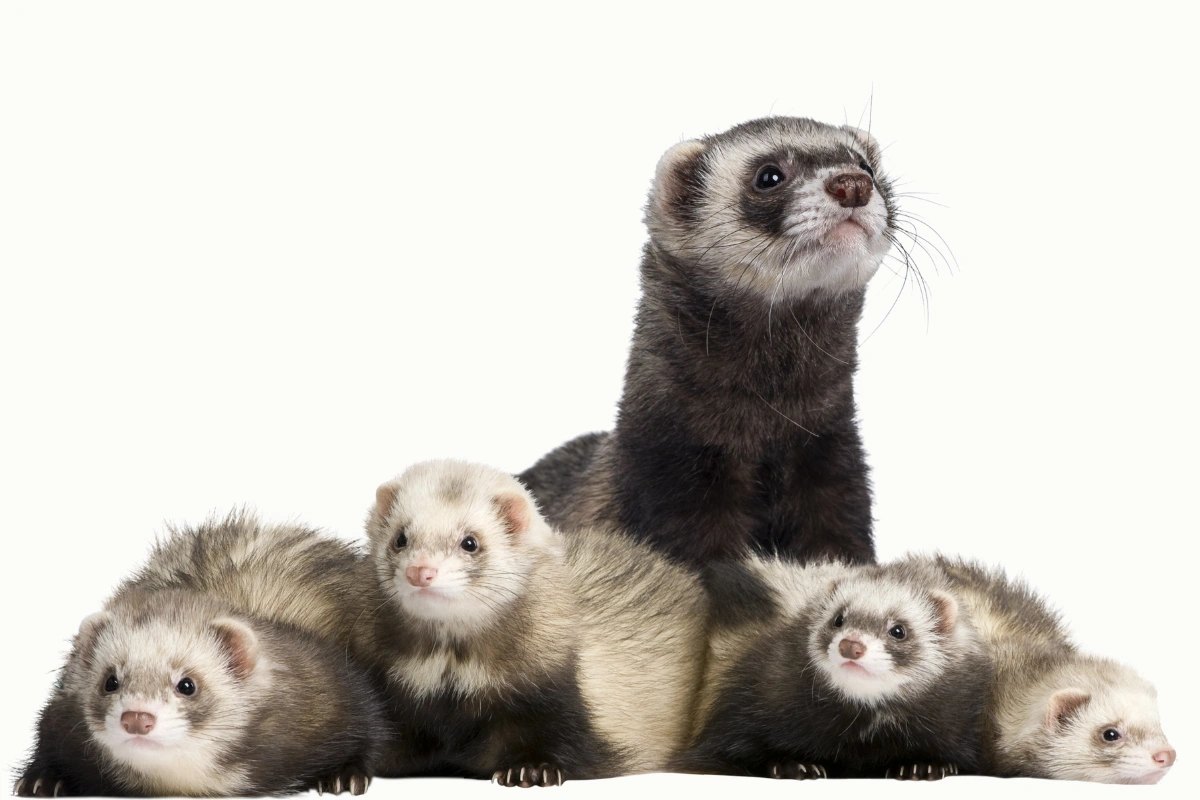The colours of ferrets make them one of the most fascinating pets. Their coats range from common shades like sable and albino to rare hues like silver and black sable. Each ferret color comes from a mix of genetics, pigmentation, and seasonal changes. Some ferrets even develop new ones as they grow, making their appearance unique over time. Understanding these colors helps owners choose the perfect pet and appreciate the beauty of their furry companions.
Briefly Introduce Ferrets and Their Diverse Coat Colors
Colours of ferrets make them stand out as unique and charming pets. Their fur comes in a variety of shades, from the classic sable to rare hues like cinnamon and silver. These small, playful creatures have coats that can change slightly over time, making each ferret even more special. Their colors often appear in combination with distinctive markings, creating patterns like the blaze, panda, and dark-eyed white variations. Whether dark or light, ferret fur brings out their personality and enhances their overall appeal.
Explain Why Ferret Colors Are Fascinating for Pet Owners
Ferret owners love the variety of coat colors because each shade gives their pet a distinctive look. Some people prefer the traditional sable, while others seek rare colors like champagne or black sable. The excitement of discovering a ferret’s changing coat during seasonal shedding makes these pets even more interesting. Since their fur can lighten or darken based on temperature and age, owners often notice subtle transformations throughout the year. This natural color shift keeps ferrets visually dynamic, adding to their charm and appeal.
Mention How Genetics Influence Their Fur Shades
Genetics play a major role in determining the colours of ferrets. Each ferret inherits specific genes from its parents that control pigmentation, fur patterns, and eye color. The presence of dominant and recessive genes influences whether a ferret has a dark sable coat, a bright albino appearance, or a soft champagne hue. Some genetic traits, like the blaze pattern, may also come with unique health considerations, making it important for breeders to understand their impact. By learning about ferret genetics, owners and breeders can better predict color variations and appreciate the science behind these beautiful creatures.
Understanding Ferret Colors and Patterns

How Ferret Coat Colors Develop
Colours of ferrets develop through a mix of genetics, pigmentation, and environmental factors. At birth, ferret kits often have lighter fur, which darkens as they grow. Their final coat color usually becomes clear by around ten weeks of age. Seasonal changes also affect their fur, with winter coats appearing thicker and sometimes lighter, while summer coats become sleeker and darker. Melanin, the pigment responsible for fur color, determines whether a ferret has a dark, medium, or light coat. The distribution of melanin creates different shades, giving each ferret a unique look.
Colours of Ferrets: The Role of Genetics Variations
Genetics plays a crucial role in shaping the colours of ferrets. Each ferret inherits specific genes from its parents that determine coat shade, pattern, and even eye color. Dominant genes often produce darker colors like sable, while recessive genes lead to lighter hues such as albino or champagne. Some genes also influence markings, creating patterns like the blaze or panda ferret. Breeders carefully select parent ferrets to maintain desirable colors, but occasional genetic mutations result in unexpected shades. Understanding these genetic factors helps owners appreciate why ferret colors vary so much.
Differences Between Standard and Rare Ferret Colors
Standard ferret colors include sable, albino, and chocolate, which are more common due to their dominant genetic traits. These shades make up most pet ferrets and are widely recognized. Rare ferret colors, such as cinnamon, silver, and black sable, occur less frequently and often result from specific genetic combinations. Some rare patterns, like the blaze or panda, add an extra layer of uniqueness. While standard colors remain popular, rare shades tend to attract the attention of ferret enthusiasts looking for something different. Whether common or rare, every ferret has its distinct charm.
Common Ferret Colors You’ll Recognize
Sable Ferret
Colours of ferrets often start with the sable, the most common and widely recognized shade. Sable ferrets have a rich brown coat with a slightly lighter undercoat. Their faces feature the classic dark mask, which gives them a mischievous and expressive look. Their eyes are typically dark, adding to their striking appearance. Since this color is dominant in genetics, many pet ferrets belong to this category. Seasonal shedding can cause their fur to lighten in winter and darken in summer, making their coat look slightly different throughout the year.
Albino Ferret
Albino ferrets stand out with their pure white fur and bright red or pink eyes. Unlike other colors, their lack of melanin results in a completely pigment-free coat. Their unique appearance makes them easily recognizable, but they require special care. Due to their light-sensitive eyes, albino ferrets may struggle with bright lighting and prefer dimmer environments. Their fur remains white year-round, unlike other ferrets whose coats change with the seasons. While some people love their ghostly beauty, others admire their friendly and affectionate personalities.
Chocolate Ferret
Chocolate ferrets display a warm, medium-brown coat that appears lighter than the classic sable. Their undercoat is usually a soft cream or white, giving them a smooth, blended look. Their eye color can range from deep brown to black, complementing their overall appearance. This color is less common than sable but still falls under the standard ferret shades. Chocolate ferrets often look especially striking in natural light, where their rich tones become more noticeable. Their gentle and inviting color makes them a favorite among ferret enthusiasts.
Rare and Unique Ferret Shades
Silver Ferret
Colours of ferrets include the stunning silver variety, known for its unique mix of white and black fur. Silver ferrets often have a light gray or salt-and-pepper appearance, with some dark markings on their face, tail, or paws. Over time, their fur may lighten, turning them into dark-eyed white ferrets as they age. This color variation is less common than sable or albino, making silver ferrets a rare and sought-after choice among pet owners. Their ever-changing coat adds to their charm, making them one of the most visually dynamic ferret colors.
Champagne Ferret
Champagne ferrets have a soft beige or light tan coat, which appears as a diluted version of the chocolate ferret. Their undercoat is usually cream or white, giving them a warm, pastel-like appearance. Their eyes can be light brown or reddish, adding to their delicate and elegant look. This color results from recessive genetic traits, making it less common than sable or chocolate. Champagne ferrets stand out for their soft and gentle hue, making them a favorite for those who prefer lighter-colored pets.
Black Sable Ferret
Black sable ferrets have one of the richest and deepest coat colors among ferrets. Their fur appears nearly black, with a slight brown undertone visible in bright light. Their dark mask blends seamlessly with the rest of their fur, creating a bold and striking look. Their undercoat is often cream or light brown, providing a slight contrast to their dark topcoat. Since this color is rarer than traditional sable, black sable ferrets are highly valued for their dramatic and elegant appearance.
Distinctive Ferret Patterns That Stand Out

Blaze Ferret
Colours of ferrets include unique pattern variations, and the blaze ferret stands out with its distinct markings. A white stripe runs from the top of the head down the back of the neck, creating the “blaze” effect. Their coat color can range from sable to cinnamon, but the white blaze remains a defining feature. They often have white mitts on their paws and a white tip on their tail. Blaze ferrets are linked to a specific genetic trait, which may come with a higher risk of hearing issues, known as Waardenburg syndrome. Despite this, their striking appearance and playful nature make them a favorite among ferret enthusiasts.
Panda Ferret
Panda ferrets have a unique color pattern that resembles the black-and-white markings of a panda bear. They have a mostly white head, with dark patches around their eyes and darker fur on their body. Their legs, shoulders, and tail usually remain a darker shade, contrasting with their white facial features. Like blaze ferrets, pandas are associated with genetic traits that may lead to partial or complete deafness. Their adorable and rare appearance makes them highly sought after, and their contrasting fur pattern gives them a distinctive charm.
Dark-Eyed White Ferret
Dark-eyed white ferrets, often mistaken for albinos, have pure white fur but dark eyes instead of red. Their coat remains white throughout their life, unaffected by seasonal changes. Unlike albinos, they retain some pigmentation in their eyes, which can appear deep brown or nearly black. This color variation results from specific genetic traits that suppress color while keeping dark eye pigmentation intact. Their bright white fur gives them a striking and elegant look, making them a popular choice for ferret lovers who prefer a light-colored pet.
Choosing the Right Colours of Ferrets for You
Do Different Colors Affect Personality or Health?
Colours of ferrets do not directly influence their personality, but certain genetic traits linked to coat patterns can impact their health. Ferrets of all colors share similar playful, curious, and energetic behaviors. However, some ferret colors, such as blaze and panda, have a higher chance of developing Waardenburg syndrome, which can cause deafness. Albino ferrets, due to their lack of pigmentation, may have light-sensitive eyes and a slightly higher risk of vision problems. While color does not determine temperament, genetic factors associated with certain shades can play a role in overall health. Choosing a ferret based on color should always include an understanding of potential health concerns.
How to Care for Ferrets with Unique Coat Patterns
Ferrets with unique coat patterns, such as blaze, panda, or dark-eyed white, require the same basic care as any other ferret. However, owners should be aware of potential health conditions. Deaf ferrets, which are more common in certain color variations, need extra attention to ensure their safety. Using visual cues, hand signals, and vibrations can help communicate with a deaf ferret. Albino ferrets, with their light-sensitive eyes, may prefer dimmer environments or shaded areas in bright light. Regular grooming helps maintain the softness and health of their fur, especially for lighter-colored ferrets that may show dirt more easily. A balanced diet, proper enrichment, and regular veterinary checkups ensure all ferrets stay healthy, regardless of their coat color.
Final Thoughts on Finding the Perfect Ferret for Your Home
Choosing the right ferret color depends on personal preference, but health and care should always be a priority. Whether you prefer the classic sable, the rare champagne, or the striking black sable, every ferret has a unique charm. Understanding how genetics influence certain coat colors can help owners make informed decisions, especially if they are considering a blaze or panda ferret. No matter the color, ferrets bring energy, playfulness, and companionship into any home. The most important factor is providing them with a loving environment where they can thrive.
Colours of Ferrets: Conclusion
Colours of ferrets come in an incredible range, from the classic sable and albino to the rare and striking black sable, panda, and blaze. Each shade has its unique beauty, whether it’s the soft champagne tone, the silver’s ever-changing coat, or the deep richness of a chocolate ferret. Some ferrets, like dark-eyed white and blaze, stand out with distinct markings, while others, such as silver, change over time. No matter the color, every ferret has a special charm that makes them an exciting and lovable pet.
With so many stunning ferret colors to choose from, it’s always fun to hear which shades people love the most. Some owners prefer traditional sable ferrets, while others enjoy rare and unique hues like cinnamon or panda. Each ferret color brings something special, and their playful personalities make them even more lovable.
Now that you’ve explored the beautiful variety of ferret colors, which one is your favorite? Do you prefer the deep, dark tones of a black sable or the bright elegance of an albino ferret? Share your thoughts in the comments and let us know which ferret color you find the most stunning!

